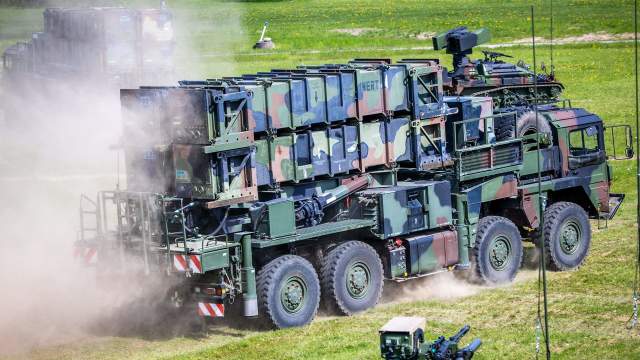And what air defense capabilities do they give Kiev
Since the beginning of the Ukrainian counteroffensive, Russian aviation has been working more and more actively in the air. This means that the confrontation between our Aerospace Forces and the Ukrainian air defense has unfolded again. As part of the enemy's air defense today, there is a whole zoo of different complexes and systems. Until February 2022, it was based on the old Soviet S-300, Buk and Tor-M1. During the special military operation, the AFU received several more different weapons systems from NATO countries. What missile systems are currently opposed to the Russian Aerospace Forces and what they are capable of, Izvestia figured out.
The power of the "Patriot"
The most authoritative and powerful air defense system that the APU has received over the past year and a half is the American multi—channel air defense system/ABOUT Patriot. At least two batteries of this SAM were deployed around Kiev in early May. One of them includes AN AN/MSQ-104 control center, AN/MPQ-65 multifunctional radar station (radar) and up to eight M901 launchers with several types of missiles being transported. These are either larger MIM104 (PAC-2 complex, up to 4 missiles per launcher) or more modern GEM-T (PAC-3 complex, up to 12-16 missiles per launcher).
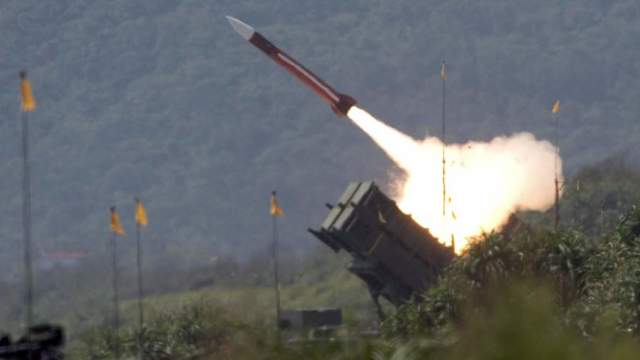
Multi-channel air defense system/ABOUT Patriot
Image Source: Photo: AP Photo/File
The Patriot air defense system provides air defense at a range of up to 100 km and is capable of hitting any aerodynamic targets — airplanes, helicopters, drones, cruise missiles. It can also work on ballistic targets, including hypersonic ones, while the range of the defense line is noticeably reduced — 20 km. And, of course, there are questions about the effectiveness of the complex for such complex and high-speed goals. For example, it turned out that Patriot is not as effective as expected against the Russian aeroballistic hypersonic Dagger.
The complex operates in a certain sector and requires separation and creation of reserve positions for maximum efficiency. This is probably caused by the fact that after the defeats of Patriot machines in May, the AFU demanded to supply Ukraine with more than ten batteries of these SAMs. Then it would be possible to close not only Kiev, but also other regional centers, provide a certain separation and try to build a circular defense. The cost of launching one Patriot missile is $3 million or more, depending on its type.
Another complex that we have already seen in the news more than once is the joint American—Norwegian NASAMS air defense system. This is a portable air defense system that can use universal AIM-120 AMRAAM missiles. It provides a circular air defense zone from aerial targets at a range of 20 to 180 km. It is capable of hitting targets at altitudes up to 21 km and flying at speeds up to 1000 m / s (3600 km / h) with a probability of up to 85%. Technically, almost everything that flies over Ukraine falls under such parameters, except ballistic missiles — NASAMS is almost useless against them.
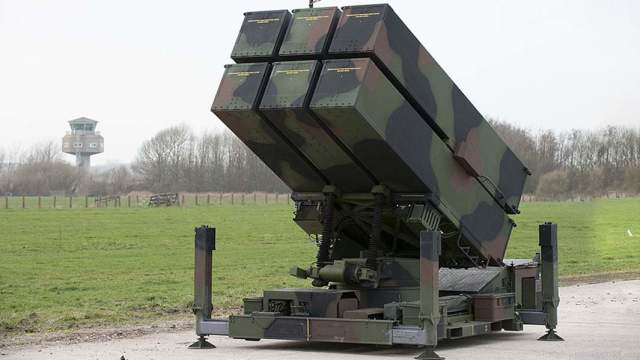
NASAMS SAM
Image Source: Photo: commons.wikimedia.org/Ministerie van Defensie
The battery of these complexes includes 12 mobile launchers (each with six missiles), several radars, a command post and auxiliary vehicles. NASAMS has been used in Ukraine since 2022, and these complexes, as well as Patriot, have a fairly high consumption of relatively expensive ammunition. Each AIM-120 AMRAAM missile costs more than $1 million.
Made in Germany
Another new air defense system supplied to Ukraine since the autumn of 2022 has been the German IRIS-T SLM air defense system. In early June, a Lancet barrage munition hit a car with a TRML-4D radar of one of these complexes.
IRIS-T missiles were created as a result of several joint programs for the development of weapons systems in the 1990s-2000s. It is universal, can be used by aircraft as an air–to–air missile and surface-to-air anti-aircraft systems. Some influence on the beginning of work on the creation of this missile was exerted by the Soviet R-73, which went to the Luftwaffe from the GDR — their characteristics were higher than those of the promising ASRAAM missile, the development of which was discontinued in favor of the original German project.
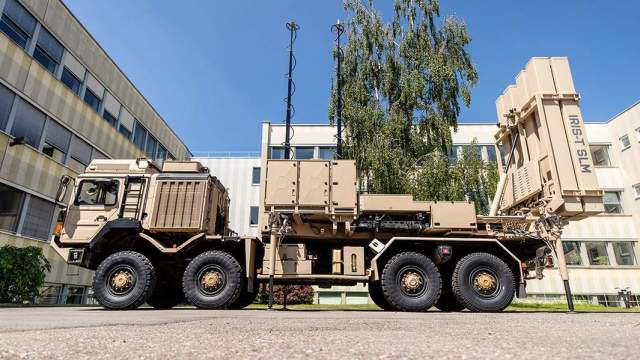
IRIS-T SLM
Image source: Photo: Global Look Press/Christoph Schmidt
The IRIS-T SLM is a mobile air defense system, each of its launchers carries up to eight missiles in transport and launch containers. The range is up to 40 km, the height of the targets is up to 20 km. The missiles are unique — with infrared homing heads. The use of such technology allows the complex to have high combat performance, since it is not necessary to aim each missile — they are guided independently after launch using the principle of "shot and forgot".
Thus, the SAM battery, due to a powerful radar and a control system, can track up to 1,500 air objects simultaneously. These are quite unique opportunities.
The IRIS-T SLM complex is fully mobile, which allows it to be used not only to protect cities, but also in the combat area. The cost of IRIS-T missiles is not as high as the cost of Patriot or NASAMS ammunition complexes, but nevertheless significant — at least 300 thousand euros per missile.
Portable solution
In February-March 2023, the APU received a number of mobile Avenger SAMs from the USA and Stormer-Starstreak from the UK. Both use a high—terrain chassis: the Avenger is wheeled, and the Stormer is tracked. And both carry missiles in a container version, respectively, Stinger and Starstreak HMV.
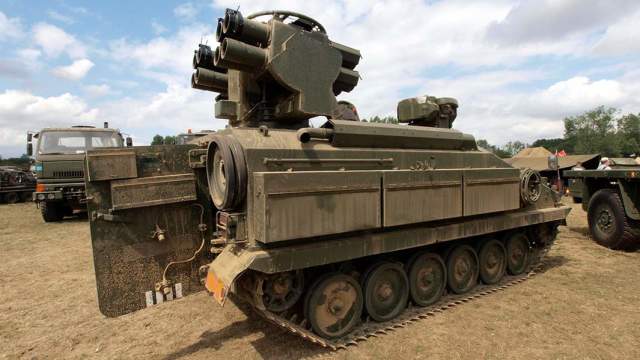
Stormer-Starstreak Mobile Air Defense System
Image Source: Photo: commons.wikimedia.org/Alf van Beem
The main task of mobile complexes is air defense in the ranks of troops from aircraft and helicopters of the enemy's assault and army aviation, as well as work on drones and subsonic cruise missiles. It is known that they can hit even fairly well-protected modern combat helicopters.
Of course, such a complex itself can become a target, for example, for a guided missile "Krasnopol" against which it has nothing to oppose — the anti-missile and anti-missile capabilities of MANPADS missiles are minimal. Their range is usually up to 5 km, the height of the targets is up to 4-5 km.
The cost of the Stinger MANPADS missile is only $ 60-70 thousand. Starstreak HMV is probably noticeably more expensive, but not several times — they are distinguished by a more complex design and higher range and altitude characteristics. After being hit by such missiles, the most durable and successful aircraft (for example, the Su-25) can return to their airfield, although they will be damaged. Still, missiles of this class are the least powerful in modern air defense arsenals.
Such a picture is emerging in the defense systems of the airspace of Ukraine. Of course, in addition to missile systems, artillery systems are also used — from the archaic Soviet 57-mm S-60 to slightly more modern universal 23-mm ZU-23-2 submachine guns, which are installed on lightly armored MT-LB tractors and cars. Of course, such air defense systems are not effective against modern aircraft and missiles. Well, our VKS find their own approach to Western air defense systems.
Dmitry Kornev
